
Charming Barrio Otoya: Historical Heart of San Jose
Discover Barrio Otoya in San Jose, Costa Rica: A charming neighborhood rich in history, culture, and culinary delights, perfect for leisurely strolls and cultural exploration.
Nestled in the northern part of San Jose, Barrio Otoya is a tranquil haven that boasts a rich tapestry of history and culture. This picturesque neighborhood is a delightful blend of colonial architecture, leafy streets, and a vibrant arts scene. As you wander through its charming avenues, you will be transported back in time by the well-preserved buildings that date back to the early 20th century. The colorful facades and intricate ironwork provide a perfect backdrop for leisurely strolls and impromptu photo sessions. Barrio Otoya is home to several important cultural landmarks, including museums, galleries, and theaters. The neighborhood’s proximity to the city center makes it an ideal base for exploring San Jose’s many attractions, yet it retains a peaceful, residential feel that offers a welcome respite from the hustle and bustle. Here, you can immerse yourself in the local art scene, enjoy a coffee at one of the quaint cafes, or simply relax in one of the many green spaces that dot the area. Food lovers will find plenty to delight their taste buds in Barrio Otoya, with a range of dining options that showcase both traditional Costa Rican cuisine and international flavors. From cozy bistros to elegant restaurants, there is something to suit every palate. The neighborhood also comes alive in the evening, with a variety of bars and lounges offering a taste of the local nightlife. Whether you are a history buff, a foodie, or simply looking for a charming place to relax, Barrio Otoya has something to offer every visitor.
Local tips in Barrio Otoya
- Visit in the morning to enjoy the neighborhood's peaceful atmosphere before the city wakes up.
- Wear comfortable shoes for exploring the cobblestone streets and historical landmarks.
- Check out local art galleries and museums for a taste of the vibrant cultural scene.
- Take time to enjoy the local cafes and try traditional Costa Rican coffee.
- Evenings are perfect for experiencing the local nightlife at cozy bars and lounges.
Charming Barrio Otoya: Historical Heart of San Jose
Nestled in the northern part of San Jose, Barrio Otoya is a tranquil haven that boasts a rich tapestry of history and culture. This picturesque neighborhood is a delightful blend of colonial architecture, leafy streets, and a vibrant arts scene. As you wander through its charming avenues, you will be transported back in time by the well-preserved buildings that date back to the early 20th century. The colorful facades and intricate ironwork provide a perfect backdrop for leisurely strolls and impromptu photo sessions. Barrio Otoya is home to several important cultural landmarks, including museums, galleries, and theaters. The neighborhood’s proximity to the city center makes it an ideal base for exploring San Jose’s many attractions, yet it retains a peaceful, residential feel that offers a welcome respite from the hustle and bustle. Here, you can immerse yourself in the local art scene, enjoy a coffee at one of the quaint cafes, or simply relax in one of the many green spaces that dot the area. Food lovers will find plenty to delight their taste buds in Barrio Otoya, with a range of dining options that showcase both traditional Costa Rican cuisine and international flavors. From cozy bistros to elegant restaurants, there is something to suit every palate. The neighborhood also comes alive in the evening, with a variety of bars and lounges offering a taste of the local nightlife. Whether you are a history buff, a foodie, or simply looking for a charming place to relax, Barrio Otoya has something to offer every visitor.
Iconic landmarks you can’t miss
Parque Central de San José
Explore the vibrant Parque Central de San José, a green oasis in the heart of Costa Rica's capital, blending culture, history, and community spirit.

Plaza de la Cultura
Experience the vibrant culture of San José at Plaza de la Cultura, the city's heartbeat filled with art, history, and local charm.

Museo del Jade
Discover the ancient artistry of Costa Rica at Museo del Jade, home to the world's largest collection of pre-Columbian jade artifacts.

Parque España
Experience the tranquility and beauty of Parque España, a lush urban park in San José, Costa Rica, perfect for relaxation and cultural exploration.

Los Presentes
Explore Los Presentes, a historical landmark in San José, Costa Rica, where rich heritage and captivating architecture await every traveler.
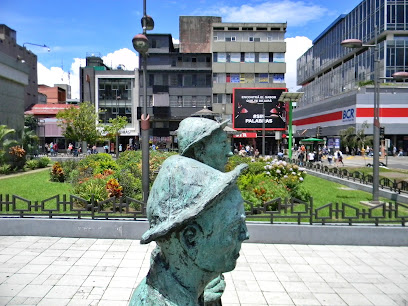
City of Color Murals
Explore the City of Color Murals in San José, where every wall tells a story through stunning street art celebrating Costa Rican culture and creativity.
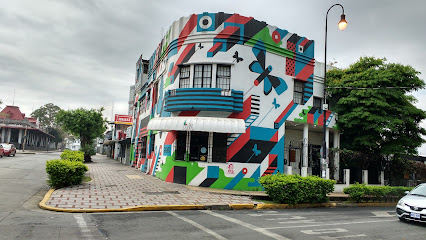
Castillo Del Moro
Experience the charm and history of Castillo Del Moro, a stunning castle in San José, Costa Rica, surrounded by breathtaking landscapes.

El Farolito
Discover the rich history and vibrant culture at El Farolito, a historical landmark in San José's enchanting Barrio Escalante.
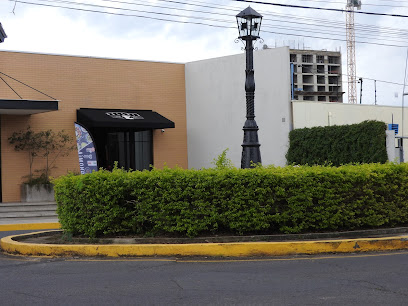
Monumento a Carlos Gardel
Explore the Monumento a Carlos Gardel in San José, a tribute to tango's legendary voice, capturing the heart and soul of Costa Rica's vibrant culture.

Monumento don José de San Martín
Explore the Monument to José de San Martín, a significant historical landmark in San José, reflecting on freedom and independence in Latin America.

Essential places to dine
Restaurante Nuestra Tierra
Experience authentic Costa Rican cuisine at Restaurante Nuestra Tierra in San José – a vibrant spot for delicious local flavors.

La Criollita
Experience authentic Costa Rican flavors at La Criollita in San José – where every dish tells a story.

Café Mundo
Discover Café Mundo in Otoya, San José - where local flavors meet global cuisine in a warm and inviting atmosphere.

Café Otoya
Experience authentic Costa Rican flavors at Café Otoya in San José—where local ingredients meet warm hospitality.

Café de los Deseos
Discover Café de los Deseos: A charming gastropub in San José offering delightful cuisine and a cozy atmosphere for every traveler.

La Esquinita de la Abuela
Discover authentic Costa Rican flavors at La Esquinita de la Abuela - where tradition meets taste in San José's vibrant Otoya neighborhood.

October Six Café Bistró
Discover culinary delights at October Six Café Bistró in San José's vibrant Barrio Amón, where Costa Rican flavors meet global cuisine.
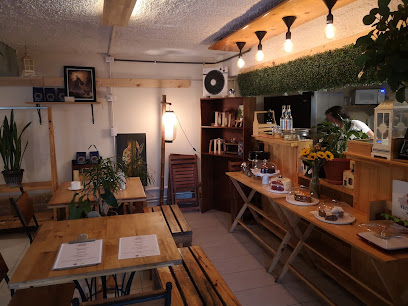
La Linea Restaurant and Bar
Experience authentic Costa Rican grill cuisine at La Linea Restaurant and Bar in Otoya – where flavors meet tradition.

HOWM
Experience authentic Costa Rican cuisine at HOWM in San José's vibrant Otoya district—where flavor meets tradition.
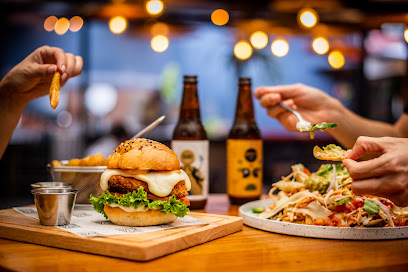
Marelis Kitchen Restaurante y Cafetería
Discover the authentic flavors of Costa Rica at Marelis Kitchen Restaurante y Cafetería in San José's Otoya district - a brunch lover's paradise!
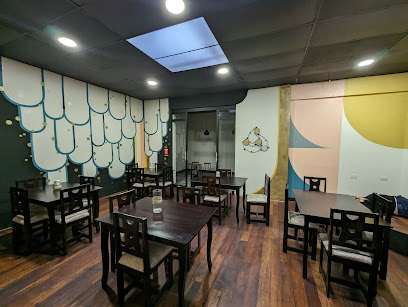
Markets, malls and hidden boutiques
Pura Vida Souvenirs
Discover the vibrant spirit of Costa Rica at Pura Vida Souvenirs, where local crafts and unique gifts await every traveler.

Chinese Center Articles
Explore the Chinese Center Articles in San José for unique gifts, traditional crafts, and a taste of cultural artistry.

Holalola Gift Shop
Discover authentic Costa Rican souvenirs at Holalola Gift Shop in San José's vibrant Barrio Escalante, where culture meets craftsmanship.

Artesanias y Souvenirs diduGO
Explore the vibrant craftsmanship of Costa Rica at Artesanias y Souvenirs diduGO, a must-visit craft store in San José for authentic souvenirs.

Tienda Eñe
Explore the best of Costa Rican fashion at Tienda Eñe, a boutique showcasing unique clothing and local artisan crafts in San José.
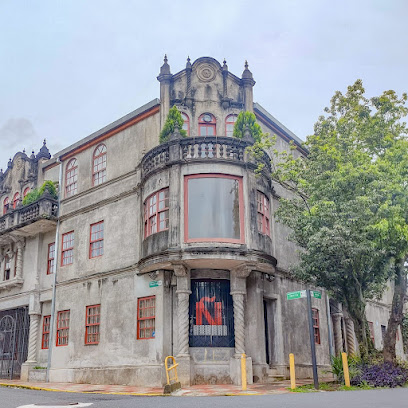
El Ático
Discover unique Costa Rican crafts and souvenirs at El Ático, a charming gift shop in the heart of San José's Barrio Escalante.

La Salamandra
Discover unique Costa Rican fashion at La Salamandra, a clothing store in San José's vibrant Otoya district, where quality meets local artistry.

El Taller CR
Explore El Taller CR in San José for unique, locally crafted products that embody the spirit of Costa Rican culture.

District Shop
Explore District Shop in San José for unique crafts, local delicacies, and a true taste of Costa Rican culture, just steps from the Plaza de la Cultura.

Boutique Kiosco San José
Explore unique home goods and artisanal crafts at Boutique Kiosco San José, the heart of Barrio Escalante's vibrant shopping scene.

Essential bars & hidden hideouts
Agüizotes Gastro Pub
Explore Agüizotes Gastro Pub in San José for a vibrant atmosphere, mouthwatering grilled dishes, and a diverse selection of craft beverages.

Chubbs Bar
Experience the vibrant nightlife of San José at Chubbs Bar, where delicious cocktails and a lively atmosphere await every visitor.

Café de los Deseos
Discover the flavors of Costa Rica at Café de los Deseos, a vibrant gastropub in San José offering a delightful fusion of local and international cuisine.

Neon
Experience the vibrant nightlife at Neon, a colorful cocktail bar and restaurant in San José's Barrio Escalante, perfect for socializing and enjoying innovative drinks.

Pub Piso 3
Discover the vibrant atmosphere of Pub Piso 3 in San José, a lively bar offering delicious drinks and a taste of local culture.

Bar El 13
Discover the vibrant nightlife of San José at Bar El 13, where expertly crafted cocktails and a lively atmosphere await.

Stiefel Pub Otoya
Savor the vibrant flavors of Costa Rica at Stiefel Pub Otoya, a top grill restaurant in San José with a lively atmosphere and delectable dishes.

La Flota
Discover La Flota, a lively bar in San José offering affordable drinks, vibrant ambiance, and a taste of local nightlife.

La Linea Restaurant and Bar
Experience the vibrant flavors of Costa Rica at La Linea Restaurant and Bar, where delicious grilled dishes meet a welcoming atmosphere.

Bar Poás
Immerse yourself in the vibrant flavors of Costa Rica at Bar Poás, a top grill bar in San José's Amón district, perfect for food lovers.
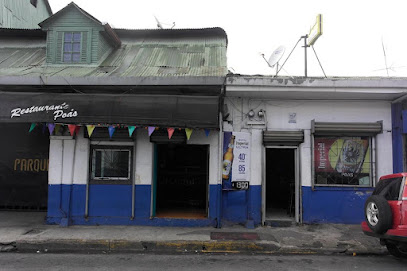
Local Phrases
-
- HelloHola
[oh-lah] - GoodbyeAdiós
[ah-dyohs] - YesSí
[see] - NoNo
[noh] - Please/You're welcomePor favor/De nada
[por fah-vohr/de nah-dah] - Thank youGracias
[grah-syahs] - Excuse me/SorryDisculpe/Perdón
[dees-kool-peh/pehr-dohn] - How are you?¿Cómo está?
[koh-moh ehs-tah] - Fine. And you?Bien. ¿Y usted?
[byehn. ee oos-tehd] - Do you speak English?¿Habla inglés?
[ah-blah een-glehs] - I don't understandNo entiendo
[noh ehn-tyehn-doh]
- HelloHola
-
- I'd like to see the menu, pleaseMe gustaría ver el menú, por favor
[meh goos-tah-ree-ah behr ehl meh-noo, por fah-vohr] - I don't eat meatNo como carne
[noh koh-moh kahr-neh] - Cheers!¡Salud!
[sah-lood] - I would like to pay, pleaseMe gustaría pagar, por favor
[meh goos-tah-ree-ah pah-gahr, por fah-vohr]
- I'd like to see the menu, pleaseMe gustaría ver el menú, por favor
-
- Help!¡Ayuda!
[ah-yoo-dah] - Go away!¡Vete!
[veh-teh] - Call the Police!¡Llame a la policía!
[yah-meh ah lah poh-lee-see-ah] - Call a doctor!¡Llame a un médico!
[yah-meh ah oon meh-dee-koh] - I'm lostEstoy perdido
[ehs-toy pehr-dee-doh] - I'm illEstoy enfermo
[ehs-toy ehn-fehr-moh]
- Help!¡Ayuda!
-
- I'd like to buy...Me gustaría comprar...
[meh goos-tah-ree-ah kohm-prahr] - I'm just lookingSolo estoy mirando
[soh-loh ehs-toy meer-ahn-doh] - How much is it?¿Cuánto cuesta?
[kooahn-toh kwehs-tah] - That's too expensiveEso es demasiado caro
[eh-soh ehs deh-mah-see-ah-doh kah-roh] - Can you lower the price?¿Puede bajar el precio?
[pweh-deh bah-hahr ehl pree-syoh]
- I'd like to buy...Me gustaría comprar...
-
- What time is it?¿Qué hora es?
[keh oh-rah ehs] - It's one o'clockEs la una
[ehs lah oo-nah] - Half past (10)Media (10)
[meh-dee-ah (diez)] - MorningMañana
[mah-nyah-nah] - AfternoonTarde
[tahr-deh] - EveningNoche
[noh-cheh] - YesterdayAyer
[ah-yehr] - TodayHoy
[oy] - TomorrowMañana
[mah-nyah-nah] - 1Uno
[oo-noh] - 2Dos
[dohs] - 3Tres
[trehs] - 4Cuatro
[kwah-troh] - 5Cinco
[seen-koh] - 6Seis
[sehs] - 7Siete
[syeh-teh] - 8Ocho
[oh-choh] - 9Nueve
[nweh-veh] - 10Diez
[diez]
- What time is it?¿Qué hora es?
-
- Where's a/the...?¿Dónde está...?
[dohn-deh ehs-tah] - What's the address?¿Cuál es la dirección?
[koo-ahl ehs lah dee-rehk-syohn] - Can you show me (on the map)?¿Puede mostrarme (en el mapa)?
[pweh-deh mohs-trahr-meh (ehn ehl mah-pah)] - When's the next (bus)?¿Cuándo es el próximo (autobús)?
[kwan-doh ehs ehl proh-ksee-moh (ow-toh-boos)] - A ticket (to ....)Un boleto (para ....)
[oon boh-leh-toh (pah-rah)]
- Where's a/the...?¿Dónde está...?
History of Barrio Otoya
-
Barrio Otoya, located within the larger context of San José, reflects the city's evolution from a small agricultural settlement to a bustling urban center. Founded in the late 19th century, Otoya was initially characterized by its agricultural activities, with coffee and sugar cane being the primary crops. The fertile lands surrounding the area contributed significantly to the local economy and the development of the city.
-
Throughout its history, Barrio Otoya has been a melting pot of cultures, influenced by waves of immigrants from various countries. This cultural diversity is evident in the architecture, local cuisine, and community practices. The neighborhood has seen a blend of Costa Rican traditions with those brought in by immigrants, contributing to a rich cultural tapestry that defines the area.
-
The mid-20th century marked a period of significant urbanization in San José, and Barrio Otoya was no exception. As the city expanded, the neighborhood underwent substantial changes, with an influx of residents seeking employment and better living conditions. This growth led to the construction of various residential buildings and local businesses, transforming the landscape of Otoya and increasing its population density.
-
During the late 20th century, Barrio Otoya became a focal point for political and social movements in Costa Rica. Activism related to labor rights and social justice emerged from the neighborhood, as residents organized to advocate for better working conditions and community resources. These movements played a crucial role in shaping the socio-political landscape of San José and highlighted the community's resilience.
-
Today, Barrio Otoya stands as a vibrant neighborhood within San José, showcasing a mix of historical architecture and modern developments. The local culture is celebrated through various festivals and community events, reflecting the enduring traditions and innovations of its residents. The neighborhood continues to evolve, maintaining its unique identity while adapting to contemporary urban challenges.
Barrio Otoya Essentials
-
Barrio Otoya is easily accessible from various neighborhoods in San Jose. From the city center, you can take a taxi or use ride-hailing apps such as Uber. Public buses also serve this area, with routes connecting to major hubs like Plaza de la Cultura. If you are arriving from Juan Santamaria International Airport, consider taking a taxi or a shuttle service directly to Barrio Otoya, which typically takes around 30 to 40 minutes.
-
Barrio Otoya is relatively small, making it walkable for most visitors. For public transport, local buses operate frequently, while taxis and ride-hailing services are widely available. Bicycles can also be rented for a more adventurous way to navigate the neighborhood. Be mindful of traffic, as rush hours can be busy.
-
Barrio Otoya is generally safe, but like any urban area, it is wise to stay alert. Avoid poorly lit streets at night and be cautious of your belongings, especially in crowded areas. Areas such as certain parts of nearby La Merced can have higher crime rates, so it is advisable to be vigilant and avoid walking alone after dark.
-
In case of an emergency, dial 911 for police, fire, or medical assistance. The nearest hospital is Hospital San Juan de Dios, which is well-equipped for medical emergencies. Ensure you have travel insurance that covers health issues. For non-urgent matters, local pharmacies are available for basic health needs.
-
Fashion: Do dress modestly, particularly when visiting local churches or markets. Don't wear overly casual attire in more formal settings. Religion: Do respect local customs; always ask for permission before photographing people in religious settings. Public Transport: Do offer your seat to elderly passengers. Don't engage in loud conversations or play music on public transport. Greetings: Do greet with a friendly 'Hola' and a smile. Don't ignore someone who greets you first. Eating & Drinking: Do try local dishes at sodas (small restaurants) and accept invitations to join locals for meals. Don't waste food, as it is considered disrespectful.
-
To experience Barrio Otoya like a local, visit the neighborhood markets to taste fresh fruits and local snacks. Engage with the community by participating in local events or festivals if your visit coincides with them. Consider taking a walking tour to learn about the history and culture directly from experienced guides. Don't hesitate to ask locals for recommendations on hidden gems to explore.
Nearby Cities to Barrio Otoya
-
Things To Do in Manuel Antonio
-
Things To Do in Jaco
-
Things To Do in La Fortuna
-
Things To Do in Monteverde
-
Things To Do in Puerto Viejo
-
Things To Do in Guanacaste
-
Things To Do in Liberia
-
Things To Do in Playa Flamingo
-
Things To Do in Tamarindo
-
Things To Do in Volcan
-
Things To Do in Bocas del Toro
-
Things To Do in Boquete
-
Things To Do in Ometepe
-
Things To Do in San Juan del Sur
-
Things To Do in David




